With this Millet Idli recipe that uses only millets and lentils, and no rice, you can easily make soft, fluffy Idlis that tastes awesome and is a much healthier option for everyone including diabetics.
This millet idli is made with naturally fermented batter without using any chemicals like baking soda. And the same batter can be used for making Dosa or Uthappam too.
I have made millet idli twice. The first time I used Little millet, which I am sharing here and the second time it was Kodo millet. After having millet idli twice, my son Siddharth commented that we should switch over to millets and avoid rice as much as we can. Do I need to say anything else?
Little millet also known as Kutki in Hindi or Samai in the Tamil language, is very big when it comes to nutrients. It is one of the Siridhanya and has maximum iron (9.3 mg in every 100 g) as compared to other millets.
You can use this or any other millet which you have. The method remains the same.
Why You Will Love This Recipe
- Overall high in nutrients.
- Made without adding rice.
- Good for diabetics, as millets have a low GI.
- No use of chemicals like baking soda.
- Gluten-free, thus good for celiac people.
- Fiber-rich
How To Make
Millet Idli is made just like the regular rice idlis. We take millet and Urad dal in 3:1 ratio, that is, 3 parts millets and one part Split black gram lentils. Then both are soaked, millet for a minimum of 4 hours and the lentils for about 2 hours. Thereafter both are grinded finely.
Then this batter is set aside for fermentation. The fermentation process may take somewhere from 8 hours to 16 hours depending upon the weather. In summers it gets fermented well in around 8 hours. Once fermented, keep it in the refrigerator or make Idli or Dosa or Utthapam.
To make idli, heat water in an idli cooker or any big pressure cooker in which your idli stand fits in. If using a pressure cooker then remove the gasket (rubber ring) and let the whistle be there. The whistle won't blow as the gasket has been removed. Then heat about one cup water in the cooker. Grease the idli stand cavities. And fill these with the batter. Steam idlis for about 20 minutes.
Related Recipes
Step By Step Recipe
- Rinse little millet in water to clear all dirt and debris. Soak it in enough water for a minimum of 4 hours, though can soak it more too.
- Clean and soak urad dal for at least an hour. Soak fenugreek seeds also along with the lentils.
- Soak Poha (beaten rice) for 15 minutes. Soak it just before you begin grinding everything.
- Drain water and grind everything together. You may grind these together or separately.
Tip: Add about 1 teaspoon water at a time while grinding the mix. Add water like this 3 to 4 times or as required. This makes the batter fluffy.
- Once grounded finely, take this out in an airtight container, mix in it a pinch of sugar.
- Close the container and leave it aside for fermentation. If possible leave it in sunlight or keep it inside your oven or microwave. Sugar fastens the fermentation process. (though this is optional)
- When fermented well, dilute it a little by adding some water. Too thick batter means hard idlis. So, keep the batter slightly loose.
- Heat water in an idli cooker or ordinary pressure cooker. if using a pressure cooker, remove the gasket and let the whistle be there.
- Grease the cavities of idli stand and fill these with idli batter.
- Keep this in the idli cooker or pressure cooker.
- Steam it on high flame for 2 minutes and then reduce the flame to low. Let the idlis steam for about 20 minutes.
- After 20 minutes, check by inserting a knife. If the knife comes out clean means the idlis are done.
- Take out the idlis by moving a butter knife around each idli.
- Serve with love, Sambhar and onion-tomato chutney optional.
- If not making Idli immediately then keep the fermented batter in the refrigerator till use.
- Similarly, keep the leftover batter in the refrigerator.
- You can use the same batter for making Dosa or Uthappam also.
FAQs
Q) What Is Meant By Millet Idli?
You must have read this word many times and I wonder if ever you got confused as to which millet to be used for making idli. Before i started using millets, this statement was really confusing for me. But now, I am clear so thought of sharing it with you all in case anyone of you have doubts regarding this.
Millet idli means that you can use any millet be it Little Millet or Kodo Or Browntop or Barnyard or any other. You can use whole millets or in the rice form. The only difference would be in soaking time. Whole millets like Finger millet (Ragi), Sorghum (Jowar) or Pearl Millet (Bajra) needs to be soaked for 8 to 10 hours whereas other millets can be soaked for few hours only. So, use whichever millet you have.
Q) Why should I have Millet Idli?
Idli is a healthy food as it is steamed and is made without using any oil or other fat. But still, many people who are diet conscious or are diabetics cannot eat this as it is rice-based. A look at the chart below will make it clear to you that rice only has carbs without any fiber or other minerals. In such a situation, isn't it better to avoid rice as much as we can? Besides, millet idli is good for diabetics as millets have a low GI.
Q) Is Millet Idli Same As Rice Idli?
The answer would be yes, it is like rice idli, up to 80%. The difference is there in terms of texture and softness but that difference is marginal. If you have had rice idli throughout your life then definitely you will feel the change but its going to be a pleasant change. And if you look at the benefits of millets then you are just going to love it.
Q) What is Siridhanya?
Siridhanya means positive millets that have balanced nutritional profile. These are Browntop, Barnyard, Foxtail, Kodo and Little Millet.
Let's Connect!
I hope you have liked this recipe for Millet Idli and will surely try it out for your loved ones. I would love to have your views regarding this.
Thank you for reading this post. If you have liked this recipe then do let me know by leaving a comment below. Your feedback fuels my enthusiasm. You may share this post with your dear ones by clicking on the little buttons below. You may follow me on Facebook Pinterest Instagram( #samirasrecipediary) too. for latest recipe updates. Thank you!
Millet Idli Without Rice
- My Cup Measures 240 ml
- 1.5 Cup Little Millet
- 1/2 Cup Urad Dal
- 1 Tbsp Fenugreek Seeds
- 1/4 Cup Poha (Beaten Rice)
- Pinch Of Sugar (Optional)
- Rinse little millet in water to clear all dirt and debris. Soak it in enough water for a minimum of 4 hours, though can soak it more too.
- Clean and soak urad dal for at least an hour. Soak fenugreek seeds also along with the lentils.
- Soak Poha (beaten rice) for 15 minutes. Soak it just before you begin grinding everything.
- Drain water and grind everything together. You may grind these together or separately.
- Tip: Add about 1 teaspoon water at a time while grinding the mix. Add water like this 3 to 4 times or as required. This makes the batter fluffy.
-
Once grounded finely, take this out in an airtight container, mix in sugar. Close the container and leave it aside for fermentation. If possible leave it in sunlight or keep it inside your oven or microwave.
- When fermented well, dilute it a little by adding some water. Too thick batter means hard idlis. So, keep the batter slightly loose.
- Heat water in an idli cooker or ordinary pressure cooker. if using a pressure cooker, remove the gasket and let the whistle be there.
- Grease the cavities of idli stand and fill these with idli batter.
- Keep this in the idli cooker or pressure cooker
- Steam it on high flame for 2 minutes and then reduce the flame to low. Let the idlis steam for about 20 minutes.
- After 20 minutes, check by inserting a knife. If the knife comes out clean means the idlis are done.
- Take out the idlis by moving a butter knife around each idli.
- Serve with love, Sambhar and onion-tomato chutney optional.
- If not makimg Idli immediately then keep the fermented batter in the refrigherator till use.
- Similarly, keep the leftover batter in the refrigerator.
- You can use the same batter for making Dosa or Uthappam also.
- Use any millet of your choice and availability.
- You may use any cup for measuring. Using the same cup, take 3 parts millet and one part lentils.
- Sugar fastens the process of fermentation. You can use honey too in place of sugar. Though this is completely optional,

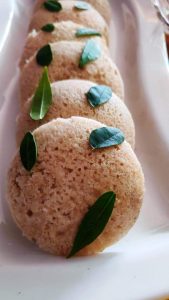
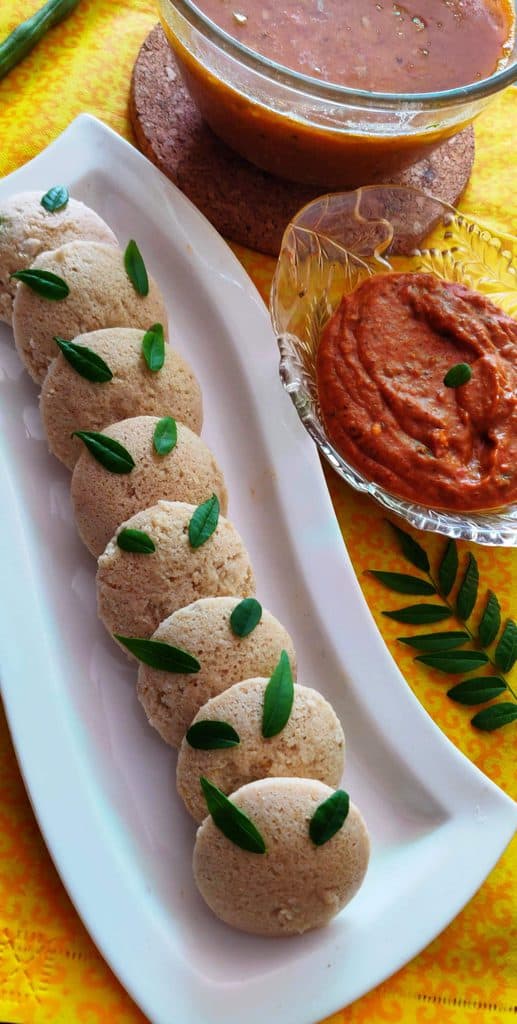
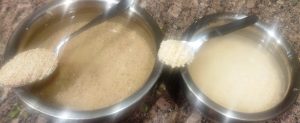
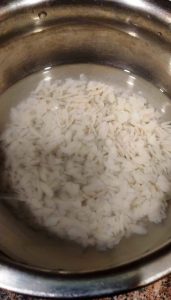
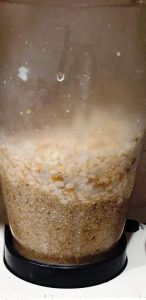
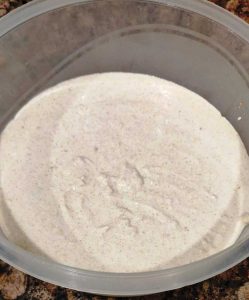
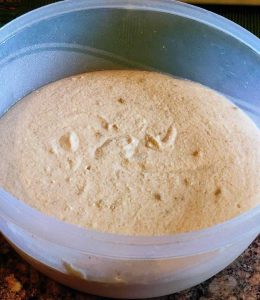
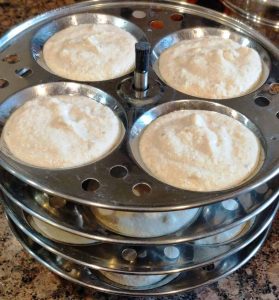
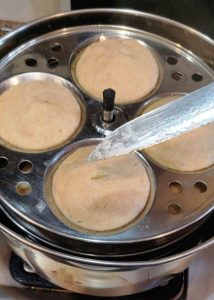

Trackbacks/Pingbacks